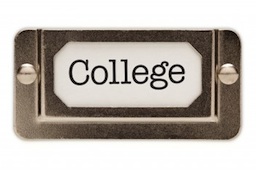 By Kelly Hodges
By Kelly Hodges
In an ideal world, parents would set aside enough money to both send their children to college and ensure their own comfortable retirement. 401ks, IRAs, 529s, and all other various accounts would be fully funded with money to spare for a Mediterranean cruise (hey, I’m talking about an ideal world!)
In reality, there’s not always enough money to go around, and parents need to make difficult decisions about where to allocate their finite resources. The truth of the matter is, a student can take out a loan for their education, but there are no equivalent loans that will bail you out if you don’t save enough for retirement. For those who want to save for education without sacrificing saving for retirement, the Roth IRA is a nice alternative to a 529 plan. Here are a few of the pros and cons of using a Roth IRA to save for college.

PRO: A Roth IRA can be used for education or retirement (or other qualified distributions). Although typically considered to be a retirement savings account, contributions can be withdrawn tax-free without a penalty if used for qualified educational expenses — note that taxes may be due on the earnings, though. Also, if you find that you don’t need the funds when your child is college age (i.e. he/she gets that soccer scholarship you were hoping for), just keep the funds in the account and use it as a retirement account. This is in contrast to the 529 plan where there are taxes and penalties if the money does not get used for education. For more on the Roth IRA and any tax and penalty implications, be sure to visit the IRS website.
PRO: As a general rule there are more investment options available through a Roth IRA than a state 529 plan. Stocks, bonds, mutual funds, ETFs, and others are all available in a Roth IRA if you are interested in being more actively involved in where your funds are directed. This is in contrast to the 529 plans where there may be only one or two investment options available.
PRO: Money earmarked for retirement (such as money in a Roth IRA) is not generally factored into the federal financial aid calculations. Even if this money is used to pay tuition, having it in a retirement account may increase the aid your child will qualify for.
CON: Not everyone is able to contribute to a Roth IRA. In 2012 couples earning over $183,000 or singles earning over $125,000 are not eligible to contribute. However, those earning above these limits may have an easier time coming up with money to fund both retirement and college savings accounts.
CON: Contributions to a Roth IRA do not invoke any state income tax benefits, as is common with 529 plans. Depending on the state you live in, there could be a significant tax advantage left on the table by forgoing 529 contributions.
Although there are many different ways to save for college, what matters most is to just bite the bullet and do it! Any method of setting aside funds for your child’s education will serve the purpose, and is much better than doing nothing at all. So start researching today and be sure to contact a licensed professional for a more thorough analysis of your personal situation and tax implications.
Recommended Reading: Parts 1 & 2 of the series, College Savings 101 – Reality Check and The 529 Plan.
Any opinions expressed herein are solely those of the author, and do not in any way represent the views or opinions of her employer or any other person or entity.
Follow us on Twitter @seeitmarket and be sure to “Like” See It Market on Facebook to keep up with current news and updates on the site.








